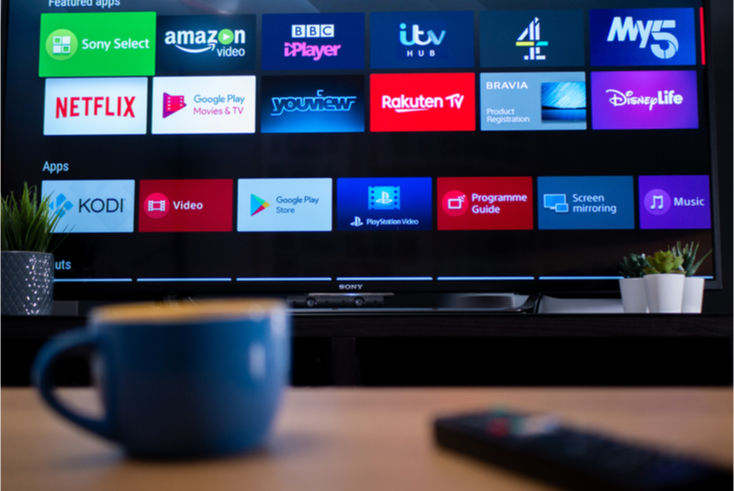Three strategies for success in the new age of cross-platform TV

Meg Garnett Coyle, vice president communications at TVSquared details three ways advertisers are succeeding in this era of cross-platform TV
Among the many trends accelerated by the pandemic, the way consumers watch TV across platforms is one of the most impactful.
Consumers in need of entertainment were increasingly empowered to use multiple devices to access the programmes they enjoyed.
Subscription video-on-demand (SVOD) surged, with one in five UK households signing up for a new service during the initial Covid-19 lockdown.
By the last quarter of 2020, the global acceleration in SVOD users attributed to the launch of new platforms, while the changes in viewing habits due to the coronavirus saw a year-over-year growth of 28.3%.
The variety of content also continues to increase, with the already successful Disney+ launching a new Star channel to appeal to a broader audience.
It’s not only SVODs that are enjoying success. During the first lockdown, linear TV viewing grew 21%, while viewing on broadcaster video-on-demand (BVOD) platforms – such as All 4, ITV Hub and Sky On Demand – jumped 45%.
Keeping pace with this rapidly changing viewing behaviour may seem daunting for advertisers, but there are incredible engagement opportunities for those that do.
Here are three ways advertisers are succeeding in the new age of cross-platform TV.
1) They don’t use the “F word” as an excuse … rather an opportunity
The fragmentation of the TV ecosystem is too often used as an excuse for poor advertising strategies and performance. The truth is, fragmentation presents a positive trend for advertisers. As the possibilities for TV viewing continue to expand, consumers have more choice over what, when and how they watch TV (and choice is king).
The advertisers that are thriving are the ones that do not lament the challenges of reaching audiences in this “fragmentation nation.” They roll up their sleeves and embrace the growing opportunities to reach them however, wherever and whenever they watch TV.
By leveraging cross-platform measurement and proof of performance, advertisers can guarantee they are keeping up with their customers’ dynamic shifts in viewing behaviour (regardless of the fragmentation happening across the TV ecosystem).
2) They “get a grip” on reach and frequency
A key part of cross-platform measurement is having a true understanding of campaign reach and frequency.
Back when people did most of their TV viewing on linear, estimating reach and frequency was, dare we say, simple.
For many, ad exposure was estimated with a sample, using programme viewership, measured in increments as a proxy, which left a lot to be desired.
Fast forward to today, and with more data and platforms, calculating reach and frequency is much more complex – but balancing it is all the more critical across linear and digital content.
Reach and frequency insights allow advertisers to recognise when campaigns reach a point of diminishing returns, when spend and impressions are wasted – or even when the user experience is damaged by overexposure.
[advert position=”left”]
With CTV/OTT, insights run even deeper, providing the granularity to look at reach and frequency across each platform/publisher, and then informing when and where they may want to suppress a specific publisher or control frequency caps.
On top of this, understanding unduplicated reach across linear and CTV/OTT and within specific digital publishers, helps these advertisers identify where they can extend reach and where they are over-serving the same audience.
3) They optimise to real business outcomes
Optimising TV campaign performance across multiple platforms is only truly effective if advertisers are working towards real business outcomes.
The days when TV ads were only used to drive top-of-the-funnel metrics, such as brand awareness, are long gone. Most advertisers now understand TV can also be used to drive performance.
The KPIs measured, primarily by brands with digital calls to action, are still typically near-term outcomes such as website visits, online sales and app downloads.
However, with a vast amount of outcomes data now available, and collected at scale and in accordance with privacy regulations, the type of KPIs being measured is growing, including in-store location, POS and offline purchases.
This opens up the door for different types of advertisers to get in on the outcomes game – more traditional brands like automotive, CPG and brick-and-mortar retailers.
Today, measuring TV-driven performance is holistic – and so much more than just a click on a website.
Broader sets of advertisers are increasingly leveraging available outcomes data to layer on even more precise information to get a richer look at customer activity up and down the funnel.
In the new age of TV, viewers are accessing content on their own terms.
To take advantage of the huge opportunity this brings to reach engaged and responsive audiences, the most progressive advertisers are measuring TV the way people watch it – across time, platforms and devices – and use those insights to optimise reach, frequency and outcomes.
Advances in cross-platform TV measurement are empowering advertisers to reach the right audience, in the right place, at the right time and with the right message to drive real results.



